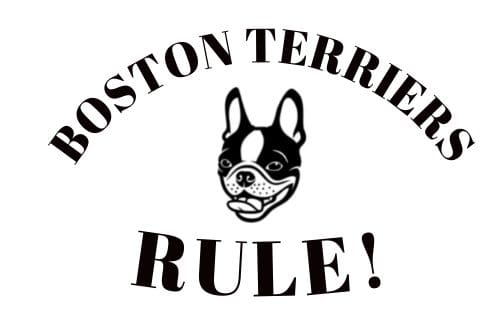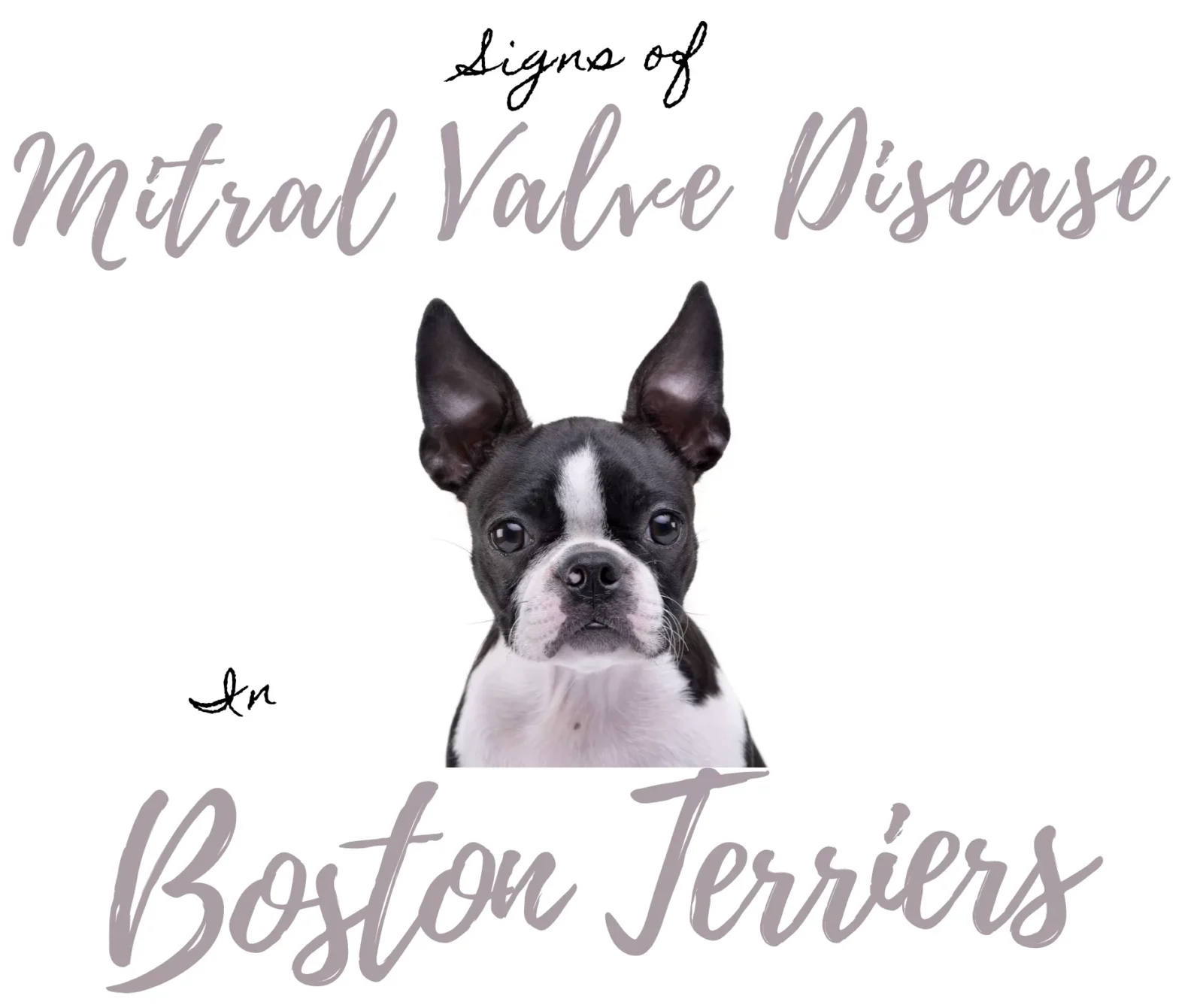Emergency Response: Protecting Your Boston Terrier After a Dog or Coyote Attack
Introduction
Living with a Boston Terrier brings joy and companionship, but just like any other breed, they can face unexpected dangers. One harrowing situation many pet owners fear is a dog or coyote attack. The safety of your beloved Boston Terrier is paramount, and understanding how to respond in such a crisis can make all the difference.
Today, we’ll explore what to do if your Boston Terrier is attacked by another dog or coyote, providing you with the knowledge to act swiftly and effectively. As well as first aid, post trauma care, and prevention measures.

Understanding the Risks
Before discussing emergency procedures, it’s crucial to recognize the potential risks your Boston Terrier faces. Dogs, both domestic and wild, can pose a threat to your pet. Coyotes, in particular, are opportunistic predators that may view a small dog like a Boston Terrier as potential prey. Don’t think that a coyote won’t try, even if your Boston is on a leash. I have heard countless stories online of smaller dogs being taken while leashed on a walk!
Knowing the risks allows you to adopt preventative measures, such as avoiding certain areas or taking precautions during walks, to reduce the likelihood of an attack.

5 Immediate Actions to Take if Your Boston Terrier is Attacked
- Assess the Situation: A Critical First Step
Upon witnessing a dog or coyote attack on your Boston Terrier, the initial surge of panic and concern can be overwhelming. However, maintaining composure is crucial for your safety, the safety of your pet, and that of others nearby. Here’s a detailed guide on assessing the situation and deciding on the most effective course of action:
Evaluate the Danger:
Before rushing in, take a moment to evaluate the level of danger. Assess the size and aggression of the attacking animal, the severity of the attack, and any potential risks to yourself and others in the vicinity. A calm and collected assessment sets the foundation for a strategic response.
Prioritize Safety:
Your safety and the safety of others should always be the primary concern. Do not put yourself at unnecessary risk by attempting to physically intervene in a violent confrontation. Dogs, especially in the midst of a fight, can be unpredictable, and approaching too hastily may escalate the situation.
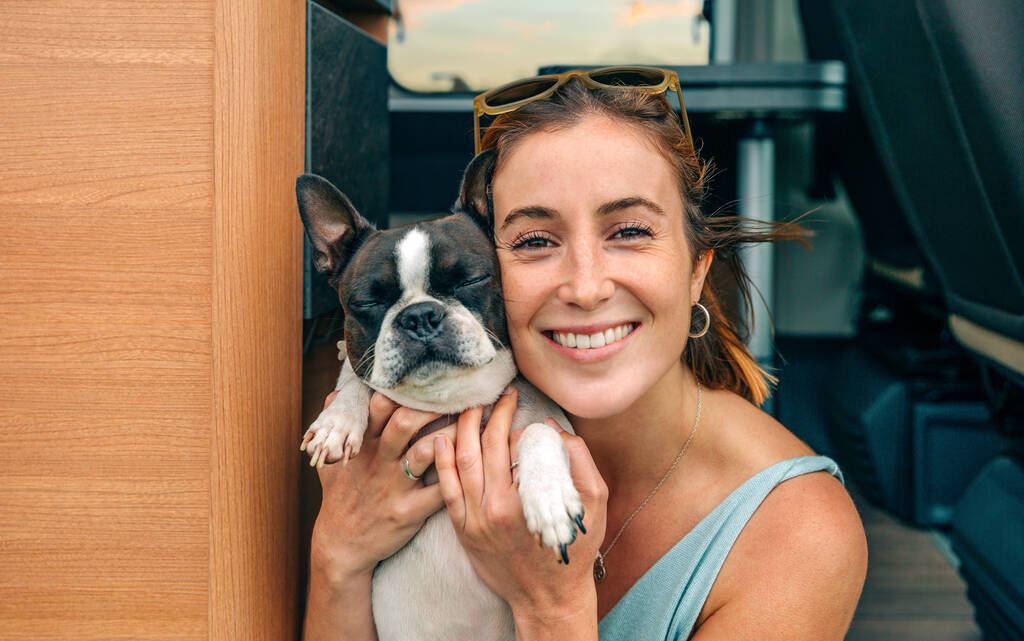
Keep Distance:
Maintain a safe distance from the altercation. This not only protects you from potential harm but also allows for a clearer assessment of the situation. Dogs or coyotes involved in a fight can be hyper-focused on each other, making them less aware of their surroundings. Staying at a distance minimizes the chance of you becoming an unintended target.
Look for Escape Routes:
Identify potential escape routes for both yourself and your Boston Terrier. If the situation escalates or the aggressor becomes more hostile, having a clear path to safety is essential. Avoid cornering yourself or your pet, and if possible, move towards an open area where you can create distance.

Use Distractions:
If you feel it’s safe to do so, use distractions to divert the attention of the attacking dog or coyote. Loud noises, like shouting or clapping, may startle the animals, providing a momentary pause in the aggression. However, always prioritize your safety when attempting any form of distraction.
Note Identification:
If the attacking dog has an owner present, note any identifiable information, such as breed, color, and distinctive markings. This information can be crucial for reporting the incident to authorities and seeking compensation for veterinary bills if necessary.
Document the Scene:
If possible, take photos or videos of the scene from a safe distance. These visuals can serve as evidence in case legal actions need to be pursued or when reporting the incident to animal control.
Remember, your assessment in these critical moments lays the groundwork for the subsequent steps you’ll take. By prioritizing safety, staying composed, and gathering crucial information, you set the stage for a more effective response to protect your Boston Terrier from further harm.

2. Call for Help: Mobilizing Support for Swift Intervention
In the chaotic aftermath of a dog or coyote attack on your Boston Terrier, summoning assistance is a critical step towards ensuring a prompt and effective response. Calling for help not only increases the chances of a swift resolution but also brings in additional resources and expertise to manage the situation. Here’s a comprehensive guide on how to mobilize support:
Use Your Phone:
If you have a mobile phone on hand, use it to call for help immediately. Dial emergency services or animal control, providing them with essential details such as your location, a brief description of the situation, and the severity of the attack. Keep the conversation concise but informative.
Yell for Assistance:
In addition to making a phone call, raise your voice to attract the attention of nearby individuals. Yell for help, and specify that it’s an emergency involving a dog or coyote attack. Bystanders may be willing to assist or call for help on their own, enhancing the chances of a rapid response.

Engage Other Dog Owners:
If the attack occurs in an area frequented by other dog owners, alert them to the situation. Fellow pet owners may be able to offer support, whether by helping to distract the aggressive dog, providing a leash, or simply being an extra set of eyes on the scene. Collective action can make a significant difference.
Utilize Emergency Whistle or Loud Noises:
If you have an emergency whistle or any loud noise-making device, use it to attract attention. This can be particularly effective in public spaces where others may be nearby but unaware of the unfolding situation. The goal is to draw attention and ensure that someone responds quickly.
Directing Traffic:
If the attack occurs in or near a road, enlist the help of bystanders to redirect traffic or create a barrier between the road and the scene. This ensures the safety of everyone involved and prevents potential accidents or further injuries.
Communicate Clearly:
When calling for help, clearly communicate the urgency of the situation and any immediate threats. Provide a concise description of the attacking dog or coyote, especially if it poses a continued danger. The more information you can relay, the better-equipped emergency services will be to handle the situation.

Stay on the Line:
If you’re speaking with emergency services or animal control, stay on the line until they advise you otherwise. They may need additional information or guidance, and your continuous communication ensures a coordinated response.
Delegate Tasks:
As more people gather to assist, delegate specific tasks to bystanders. This could include directing traffic, notifying nearby residents, or helping to restrain the attacking animal if it’s safe to do so. A well-organized response can make a significant impact on the outcome.
Coordinate with Authorities:
Upon the arrival of animal control or law enforcement, provide them with a detailed account of the incident. Share any evidence you may have, such as photos or videos, and assist them in assessing the situation. Cooperation with authorities ensures a thorough investigation and appropriate follow-up actions.
Calling for help is not just about getting immediate assistance; it’s about creating a collaborative effort to safeguard your Boston Terrier and prevent further harm. By involving others and communicating effectively, you contribute to a collective response that prioritizes the well-being of both pets and people in distressing situations.

3. Use Loud Noises: Employing Sonic Distractions for Immediate Action
When faced with a dog or coyote attack on your Boston Terrier, the strategic use of loud noises can serve as a powerful tool to disrupt the aggression and create a window of opportunity for intervention. By generating unexpected sounds, you may startle the aggressor and momentarily halt the attack. Here’s a detailed exploration of how to effectively use loud noises in such a critical situation:
Shouting Commands:
Your voice can be a potent tool in an emergency. Shout loud and assertive commands such as “Stop!” or “Go away!” in an authoritative tone. The sudden, commanding sound may catch the attention of the attacking dog or coyote, causing a momentary pause in their aggression.

Whistle or Personal Alarm:
Carrying a whistle or a personal alarm designed to emit a loud, piercing sound can be invaluable. If a dog or coyote attack is in progress, activate the whistle or alarm. The high-pitched noise is likely to startle the animals involved, giving you a crucial opening to assess the situation and take swift action.
Clapping Hands:
The sharp, rhythmic sound of clapping hands can be surprisingly effective in breaking the concentration of an aggressive animal. Clap your hands loudly and consistently to divert their attention. This method is particularly useful if you find yourself without any specialized noise-making devices.
Air Horns or Compressed Air:
If available, air horns or compressed air canisters produce a sudden, loud blast that can startle and deter an attacking dog or coyote. These devices are compact and easy to carry, making them practical for dog owners who frequent areas where such attacks are more likely to occur.

Banging Objects Together:
If you’re near objects that can produce a loud noise when struck together, use them to create a disruptive sound. For example, banging two metal objects together or hitting a hard surface with force can be effective in diverting the attention of the aggressor.
Yell for Assistance:
In addition to creating loud noises, continue yelling for assistance. Vocalizing your distress can attract the attention of bystanders or other dog owners, increasing the chances of a collective effort to help.
Maintain Distance:
While using loud noises, be mindful of maintaining a safe distance from the attacking animals. The goal is to create a distraction without escalating the situation or putting yourself at further risk. Keep a barrier, if possible, between you and the aggressive dog or coyote.
Evaluate the Response:
Observe the immediate response of the attacking animal to the loud noises. Some dogs or coyotes may be startled and retreat, while others may become more agitated. Use this information to inform your next steps, whether it involves continuing with loud noises or adjusting your approach.
Remember that the effectiveness of loud noises can vary depending on the individual animals involved and the circumstances of the attack. While this strategy may provide a temporary distraction, it is crucial to have a comprehensive plan for removing your Boston Terrier from harm’s way and seeking professional assistance as quickly as possible.

4. Distract the Attacker: Strategic Object Diversion for Quick Intervention
When confronted with the urgency of a dog or coyote attack on your Boston Terrier, strategic distraction can be a valuable tactic. Throwing an object in the direction of the aggressor aims to divert their attention, creating a crucial window for you to remove your pet from the scene safely. Here’s an in-depth guide on employing object diversion as a tactical maneuver:
Selecting Distraction Objects:
Choose objects that are readily available in your surroundings and can create a noticeable noise or movement. Ideally, opt for items that won’t cause harm to either animal but are enough to interrupt the aggressive behavior. Rocks, sticks, or even your own belongings can serve this purpose.
Assessing the Environment:
Before initiating the distraction, assess the environment for potential objects to use. Look for items that are easily throwable and won’t cause injury to any parties involved. Keep in mind that the goal is to redirect attention rather than escalate aggression.
Throwing Technique:
Employ a forceful and accurate throwing technique to ensure the object reaches the intended target. Aim for a location away from both your Boston Terrier and the attacking dog or coyote. The intention is to create a visual and auditory disruption, prompting the aggressor to momentarily break their focus.

Yelling or Commanding:
Simultaneously, accompany the object throw with loud and assertive vocal commands. Shout phrases such as “No!” or “Away!” to further emphasize the distraction. Your vocal cues, combined with the thrown object, create a multisensory interruption that may deter the attacking animal.
Maintain Distance:
While attempting to distract the attacker, be mindful of maintaining a safe distance. Avoid getting too close to the aggressor, as this could escalate the situation or make you a target. Maintain a barrier between you and the animals involved, if possible.
Create a Barrier:
If the environment allows, position yourself between your Boston Terrier and the attacking animal after initiating the distraction. This creates a physical barrier, adding an extra layer of protection for your pet and preventing further aggression.
Observe the Reaction:
After the distraction, closely observe the reaction of the attacking dog or coyote. Some may be startled and disengage from the confrontation, while others may become more agitated. Use this moment to act decisively and remove your Boston Terrier from harm’s way.

Retreat Safely:
Seize the opportunity created by the distraction to retreat to a safer location with your Boston Terrier. Move away from the immediate vicinity of the attack, ensuring you have a clear path to escape without further confrontation.
Call for Assistance:
Following the distraction, continue to call for assistance. Alert nearby individuals, dog owners, or emergency services to the ongoing situation. A collaborative effort increases the chances of a successful intervention and ensures the safety of all involved parties.
Be Prepared for Follow-Up Distractions:
In some cases, a single distraction may not be sufficient. Be prepared to use additional objects or employ different tactics if the aggressor persists. The key is to keep the animal’s attention away from your Boston Terrier long enough to facilitate a safe exit.
While object diversion can be a valuable technique, it’s crucial to recognize its limitations. Always prioritize your safety and the safety of your pet, and have a comprehensive plan in place for seeking professional assistance and veterinary care immediately after the attack is interrupted.

5. Protect Yourself: Prioritizing Safety in the Face of Danger
In the chaos of a dog or coyote attack on your Boston Terrier, your instinct to protect your pet may be powerful, but it’s paramount to prioritize your own safety. Attempting to physically intervene in the midst of an aggressive confrontation can lead to severe injury for both you and your pet. Here’s an in-depth exploration of how to protect yourself while ensuring the safety of your Boston Terrier:
Maintain a Safe Distance:
Never underestimate the unpredictability of animals engaged in an attack. Maintain a safe distance from the aggressor and avoid getting too close to prevent becoming a target yourself. A distance of at least 10 feet is generally recommended to minimize the risk of injury.
Do Not Attempt to Physically Separate:
Despite the natural urge to physically separate the animals, refrain from doing so. Dogs or coyotes engaged in aggression may redirect their hostility towards anyone attempting to intervene, escalating the danger. Direct physical intervention without proper training and protective gear is highly risky.
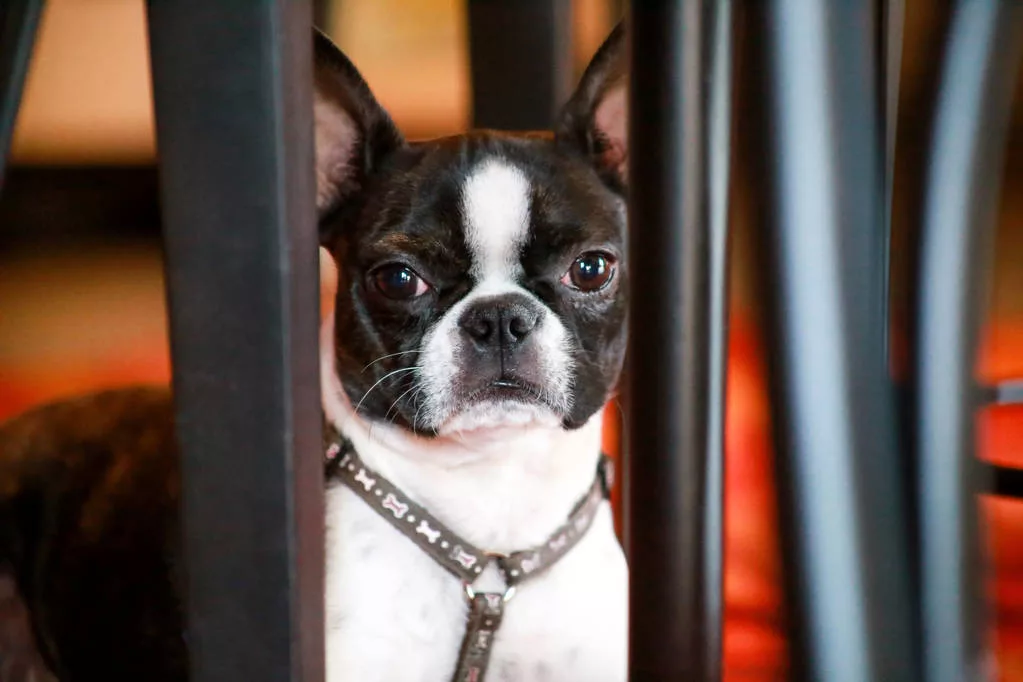
Create a Barrier:
If the environment allows, position yourself between your Boston Terrier and the attacking animal without directly engaging. Use objects like a backpack, a large umbrella, or even a bicycle as a barrier. This physical separation can provide a temporary shield and an opportunity to create a safer environment.
Stay Calm and Composed:
In the midst of an attack, emotions may run high, but maintaining a calm and composed demeanor is crucial. Dogs, in particular, can sense fear or anxiety, potentially exacerbating the situation. Stay as calm as possible to avoid escalating the aggression.
Use Your Voice:
Employ your voice as a tool for distraction. While maintaining a safe distance, use assertive commands to redirect the attention of the attacking animal. A firm “No!” or “Back off!” may provide a brief pause in the aggression.
Retreat Safely:
If the attack continues or escalates despite your attempts at distraction, prioritize your own safety and retreat to a secure location. Move away from the immediate danger zone, ensuring you have a clear path to safety. Encourage others in the vicinity to do the same.

Seek Higher Ground:
If you’re near an elevated surface, such as a car hood or a sturdy structure, consider climbing onto it to create additional distance and protection. Elevated surfaces can act as a temporary refuge until help arrives.
Use Protective Gear (if available):
If you happen to have any form of protective gear, such as a jacket, backpack, or even a stick, use it as a shield to ward off an aggressive animal. However, avoid direct physical confrontation, as animals may view defensive gestures as threats.
Call for Help:
While protecting yourself, maintain communication with emergency services, animal control, or any nearby assistance. Inform them of the ongoing situation and your location. Keep the line open for guidance and updates until professional help arrives.
Avoid Aggressive Gestures:
Refrain from making sudden movements or aggressive gestures that could further provoke the attacking animal. Maintain a non-threatening posture and continue focusing on creating a safe space for both yourself and your Boston Terrier.
Remember, your well-being is crucial for effectively handling the aftermath of the attack and seeking appropriate medical attention if necessary. Prioritize your safety, create a safe environment, and call for professional assistance to ensure the best possible outcome for both you and your beloved Boston Terrier.

First Aid for Your Boston Terrier
- Check for Injuries: Vigilant Examination for Post-Attack Care
Once the immediate threat of a dog or coyote attack on your Boston Terrier has subsided, the next critical step is to conduct a thorough examination for injuries as well as First Aid measures. A prompt and careful assessment ensures that any potential harm is identified early, allowing for timely medical intervention. Here’s a comprehensive guide on checking for injuries and the subsequent steps to take:
Secure the Environment:
Before checking your Boston Terrier for injuries, ensure that the immediate environment is safe and free from any lingering threats. Move to a secure location away from the site of the attack to prevent any potential further harm.
Approach with Caution:
Keep in mind that your Boston Terrier may be frightened, in pain, or disoriented after the attack. Approach them with caution, speaking gently to reassure and comfort them. Avoid sudden movements that could potentially exacerbate their stress.
Examine the Exterior:
Begin the examination by carefully inspecting the exterior of your Boston Terrier. Look for visible signs of injury such as bite marks, scratches, puncture wounds, or any areas of swelling or bruising. Pay special attention to the face, neck, and limbs, as these are common target areas during an attack.

Check the Mouth and Ears:
Open your dog’s mouth gently and inspect for any signs of injury to the gums, tongue, or inside of the cheeks. Additionally, examine the ears for scratches or bite marks. Injuries to these areas may not be immediately apparent but can lead to complications if left untreated.
Evaluate Mobility:
Observe your Boston Terrier’s mobility and gait. Limps, difficulty bearing weight on a particular limb, or signs of pain during movement may indicate underlying injuries. Take note of any hesitancy or resistance when attempting to walk or stand.
Palpate the Body:
Gently run your hands over your dog’s body, palpating for any areas of tenderness, swelling, or abnormal reactions. Pay attention to the abdomen, chest, and joints. If your Boston Terrier shows signs of pain, be cautious in the affected areas.
Assess for Shock:
Signs of shock, such as rapid breathing, pale gums, or a weak and rapid pulse, may not be immediately visible but can develop post-attack. If you notice any indications of shock, seek veterinary attention urgently, as it can be a life-threatening condition.

Monitor Behavior:
Be attuned to changes in your Boston Terrier’s behavior. Signs of distress, anxiety, or unusual lethargy may suggest underlying trauma or shock. If your pet appears unusually subdued or withdrawn, consult a veterinarian promptly.
Seek Professional Examination:
Even if no visible injuries are apparent, it’s crucial to seek professional veterinary examination. Internal injuries, such as bruising or damage to organs, may not be immediately evident. Early detection and intervention significantly improve the chances of a full recovery.
Document Injuries:
If possible, document any injuries through photographs or written notes. This documentation can be valuable when communicating with your veterinarian or if legal action is pursued against the owner of the attacking dog.
Veterinary Consultation:
Consult with your veterinarian as soon as possible, regardless of the apparent severity of injuries. Share your observations, provide any documentation, and follow their guidance for further assessment, treatment, and ongoing care.
Update Vaccinations:
If your Boston Terrier has been bitten or scratched, confirm with your veterinarian that their vaccinations are up-to-date. Dog bites can transmit infections, and preventive measures may be recommended.
In the aftermath of a dog or coyote attack, swift and thorough examination is key to ensuring the health and well-being of your Boston Terrier. Remember, early intervention minimizes the potential impact of injuries and contributes to a smoother recovery process.

2. Stabilize Your Dog: Ensuring Comfort and Safety Post-Attack
In the unfortunate event that your Boston Terrier is injured during a dog or coyote attack, taking immediate steps to stabilize them is crucial for their well-being. Stabilization aims to prevent further harm and ensure your pet’s comfort during the transition to professional veterinary care. Here’s a comprehensive guide on stabilizing your dog:
Assess the Severity of Injuries:
Before attempting to stabilize your Boston Terrier, assess the severity of their injuries. If the injuries are minor and your pet is still mobile, encourage them to move slowly to a safe and quiet area. For more severe injuries or if your dog is unable to move, proceed with stabilization measures.
Gentle Restraint:
Gently restrain your Boston Terrier to minimize movement. This helps prevent exacerbation of injuries and reduces the risk of additional trauma. Use a calm and reassuring voice to comfort your pet during this process.
Improvised Stretcher:
If your Boston Terrier is unable to stand or walk, create an improvised stretcher using a blanket or towel. Place the blanket underneath your pet, allowing you to lift and carry them with minimal disturbance. Avoid putting pressure on any wounded areas.

Enlist Assistance:
If your Boston Terrier is large or if you are concerned about exacerbating injuries, enlist the help of another person to assist with stabilizing and moving your pet. This ensures a smoother and more controlled transition.
Avoid Pressure on Wounds:
Be cautious not to put pressure on any visible wounds or injured areas. If there are apparent injuries, such as bite marks or scratches, avoid touching or applying direct pressure. Stabilization aims to restrict movement rather than interfere with the injuries.
Keep Head Elevated:
If your Boston Terrier shows signs of shock or has injuries that may affect breathing, keep their head elevated. This can be achieved by placing a small cushion or folded towel beneath their head. Ensure their airway remains clear.
Cover with a Blanket:
Cover your pet with a blanket to provide warmth and comfort. This is especially important if the attack occurred in cold weather. Be cautious not to wrap the blanket too tightly, allowing for proper airflow.
Minimize Stress:
Stabilization not only involves physical measures but also addresses the emotional well-being of your Boston Terrier. Speak to them in a calming tone, avoid unnecessary movements, and minimize stressors in their environment.

Transport Safely:
If veterinary care is needed, transport your stabilized Boston Terrier to the veterinarian’s office or an emergency animal hospital. If possible, call ahead to inform them of the situation and ensure they are prepared for your arrival.
Monitor Vital Signs:
While stabilizing your dog, monitor their vital signs, including breathing rate and heart rate. Changes in these signs can indicate distress or the onset of shock. If you notice concerning changes, seek immediate veterinary attention.
Maintain Calmness:
During this critical period, maintain a calm and composed demeanor. Dogs can sense the emotions of their owners, and a reassuring presence can contribute to your Boston Terrier’s sense of security.
Provide Water (if possible):
If your Boston Terrier is conscious and able to drink, offer small sips of water. Hydration is essential, but avoid forcing water if your pet is disoriented or has difficulty swallowing.
Remember, stabilization is a temporary measure aimed at ensuring the comfort and safety of your Boston Terrier until they receive professional veterinary care. Seek veterinary attention promptly to address injuries, administer necessary treatments, and develop a comprehensive plan for your pet’s recovery.

3. Contact Your Veterinarian: Timely Communication for Comprehensive Care
In the aftermath of a dog or coyote attack on your Boston Terrier, swift communication with your veterinarian is paramount. Regardless of the perceived severity of the injuries, contacting your vet promptly allows for professional guidance, a thorough examination, and the initiation of a comprehensive care plan. Here’s a detailed guide on the crucial steps to take when reaching out to your veterinarian:
Prioritize Immediate Contact:
Time is of the essence when it comes to post-attack care. As soon as the attack has ceased and your Boston Terrier is stabilized, make the call to your veterinarian. In urgent situations, many veterinary offices have emergency contact numbers or after-hours services.
Describe the Situation Clearly:
When speaking with your veterinarian, provide a clear and concise description of the attack. Highlight any visible injuries, the circumstances surrounding the incident, and any first aid measures you’ve applied. The more information you provide, the better equipped your veterinarian will be to assess the situation.
Follow Veterinarian Guidance:
Your veterinarian will provide guidance based on the information you provide. Follow their instructions carefully, whether it involves bringing your Boston Terrier in for an immediate examination or implementing specific at-home care measures. Veterinary guidance is crucial for an accurate assessment of the injuries.
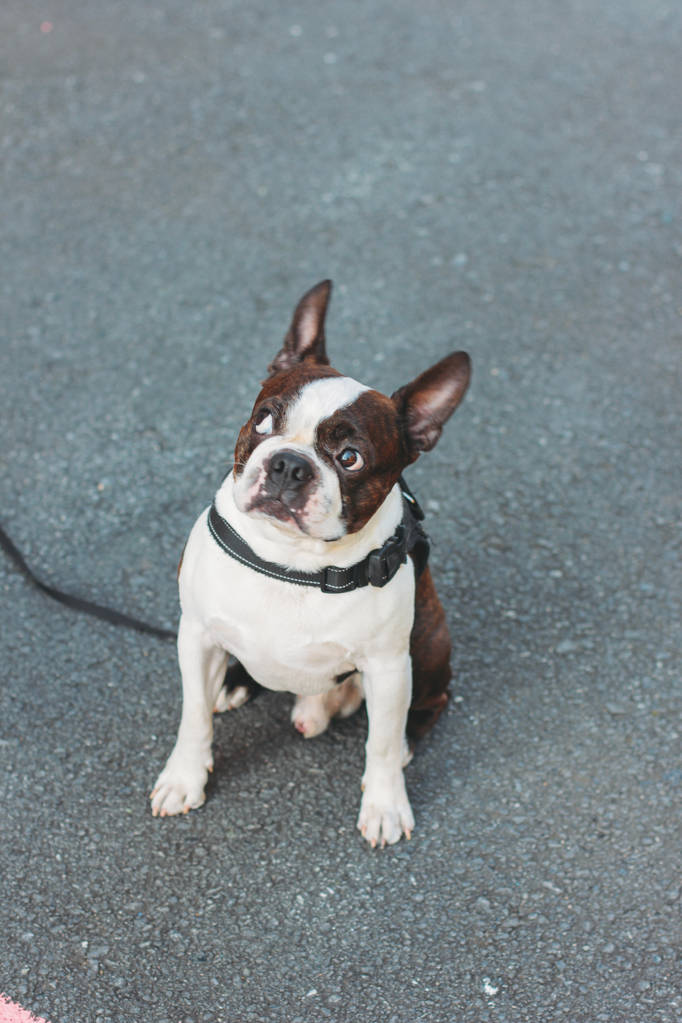
Arrange for Transportation:
If your veterinarian recommends an immediate visit, arrange for transportation to the veterinary clinic. Ensure your Boston Terrier is comfortably secured for the journey, and inform the clinic of your estimated arrival time.
Be Prepared for Emergency Care:
In certain cases, your veterinarian may advise you to seek emergency veterinary care or visit an emergency animal hospital. Be prepared to act swiftly and seek the nearest available emergency care facility. Follow their recommendations for stabilizing your pet during transit.
Provide Any Documentation:
If you’ve documented the injuries and applied first aid measures, share this information with your veterinarian upon arrival. Photos or notes can assist in the assessment and may aid in developing a tailored treatment plan.
Prepare for a Thorough Examination:
Upon reaching the veterinary clinic, be prepared for a comprehensive examination of your Boston Terrier. The vet will assess the extent of injuries, check for internal trauma, and conduct any necessary diagnostic tests such as X-rays or blood work.
Discuss Treatment Options:
Following the examination, your veterinarian will discuss treatment options based on their findings. This may include wound care, pain management, antibiotics, or additional interventions depending on the nature and severity of the injuries.

Address Emotional Trauma:
Beyond physical injuries, consider discussing any emotional trauma your Boston Terrier may have experienced. Dogs can suffer from anxiety or fear following an attack, and your veterinarian may provide recommendations for addressing their emotional well-being.
Follow-Up Care Instructions:
Your veterinarian will provide detailed instructions for at-home care and any necessary follow-up appointments. Follow these instructions diligently to ensure the best possible recovery for your Boston Terrier.
Update Vaccinations:
If the attack involved bites or scratches, confirm with your veterinarian that your Boston Terrier’s vaccinations are up-to-date. Booster shots may be recommended to prevent potential infections.
Document Veterinary Recommendations:
Document any recommendations made by your veterinarian, including prescribed medications, dietary restrictions, and limitations on physical activity. This documentation will serve as a reference for at-home care.
Remember, veterinary involvement is essential, even if initial injuries seem minor. Injuries may not be immediately apparent, and a professional assessment is crucial for identifying and addressing both visible and hidden trauma. Immediate communication with your veterinarian sets the foundation for comprehensive care and a smoother recovery process for your beloved Boston Terrier.

4. Administer Basic First Aid: Immediate Care for Wounded Boston Terriers
In the critical period before professional veterinary assistance arrives, administering basic first aid to your injured Boston Terrier is a proactive and compassionate step. Providing immediate care can alleviate pain, minimize infection risk, and contribute to a smoother recovery. Here’s a comprehensive guide on administering basic first aid:
Assess the Injuries:
Before initiating first aid, carefully assess the injuries your Boston Terrier sustained during the attack. Take note of visible wounds, areas of swelling, and signs of distress. This initial assessment guides your approach to first aid.
Gather First Aid Supplies:
Ideally, have a basic first aid kit for pets readily available. Essential supplies include mild antiseptic solutions, sterile gauze pads, bandages, tweezers, and any other items recommended by your veterinarian. Having these supplies on hand streamlines the first aid process.
Clean Wounds Gently:
Use a mild antiseptic solution or saline solution to clean wounds gently. Avoid using hydrogen peroxide, as it can damage healthy tissue. Gently dab the solution onto the wound or use a clean, damp cloth to remove debris and dirt. Take care to minimize stress for your injured pet during this process.

Apply Sterile Dressings:
If sterile gauze pads or bandages are available, apply them to wounds to provide a protective barrier. Ensure the dressings are clean and dry. Avoid applying excessive pressure, especially if the wound is deep or if there is significant swelling.
Control Bleeding (if applicable):
If there is visible bleeding, attempt to control it by applying gentle pressure with a clean cloth or gauze. Avoid using tourniquets, as they can cause additional complications. If bleeding persists, seek immediate veterinary attention.
Splint Limbs (if necessary):
In cases of suspected limb injuries, you can create a makeshift splint to stabilize the affected area. Use firm but not tight materials, such as rolled-up newspapers or cardboard, to support the limb. Be cautious not to restrict blood flow.
Protect Against Shock:
Injuries, especially severe ones, can lead to shock. Keep your Boston Terrier warm with a blanket, monitor their breathing, and maintain their head in a slightly elevated position. Minimize stress and keep them calm to reduce the risk of shock.
Offer Pain Relief (if advised by a vet):
If you have pain relief medications prescribed by your veterinarian, administer them as directed. Do not use over-the-counter or human medications without professional guidance, as some substances can be toxic to dogs.
Keep Pet Calm:
Minimize movements and keep your Boston Terrier calm to prevent further stress or injury. Speak to them in a soothing voice, avoid sudden movements, and create a quiet and comfortable environment.
Document First Aid Measures:
Document the first aid measures you’ve applied, including cleaning wounds, applying dressings, and any other interventions. This information can be valuable for your veterinarian and aids in comprehensive care.
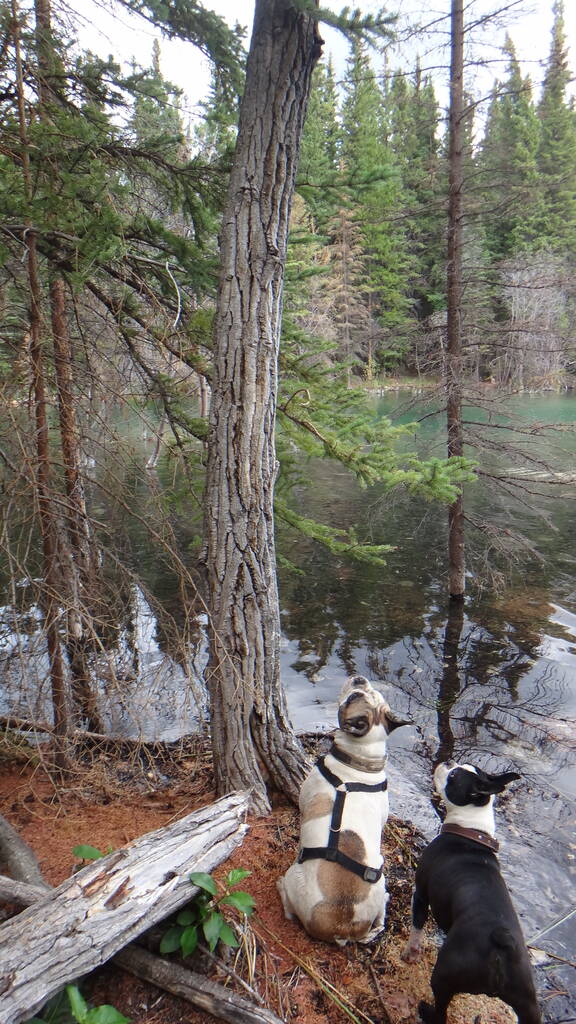
Seek Veterinary Advice:
Even if you’ve administered basic first aid, it’s crucial to seek veterinary advice promptly. Share details of the attack, the injuries sustained, and the first aid measures applied. Your veterinarian can guide you on further steps, including potential medications, additional treatments, or the need for more advanced care.
Monitor for Infection:
After administering first aid, monitor wounds for signs of infection, such as increased redness, swelling, or discharge. If you notice any concerning changes, consult your veterinarian immediately.
Remember, while basic first aid can be beneficial, it does not replace professional veterinary care. Seek immediate assistance for your Boston Terrier to address injuries comprehensively and ensure the best possible outcome for their recovery.
Post-Trauma Care
- Monitor for Behavioral Changes:
Dogs, much like humans, can experience psychological trauma after an attack. Monitor your Boston Terrier for any behavioral changes, such as increased anxiety, fearfulness, or aggression. Seek professional advice if needed. - Gradual Reintroduction to Outdoors:
Once your Boston Terrier has recovered, reintroduce them to outdoor activities gradually. This helps prevent anxiety and fear associated with the attack. Consider changing walking routes to avoid triggering distressing memories. - Professional Training:
Enlist the help of a professional dog trainer if your Boston Terrier exhibits behavioral issues post-attack. They can provide guidance on rebuilding confidence and managing fear-related behaviors.

Preventative Measures
- Training and Socialization:
Prioritize training and socialization to equip your Boston Terrier with the skills to navigate various situations. A well-socialized dog is less likely to provoke aggression in others. - Avoid High-Risk Areas:
Be mindful of your surroundings during walks and avoid areas known for high dog or coyote activity. Stick to well-lit paths and consider using a leash with added visibility features. - Carry Deterrents:
Depending on your location, carrying deterrents such as citronella spray or an air horn can be an effective way to ward off aggressive dogs or wildlife as well as a coyote vest. - Maintain Control:
Always keep your Boston Terrier on a leash in public spaces. This ensures you have control over their movements, reducing the risk of confrontations with other animals.

Conclusion
Facing a dog or coyote attack is a pet owner’s nightmare, but being prepared and knowing how to respond can make a significant difference in the outcome. By prioritizing your safety, seeking immediate help, providing first aid, and offering post-trauma care, you can enhance the chances of a positive recovery for your Boston Terrier. Remember, prevention is key, so take proactive measures to minimize the risks and create a safe environment for your beloved canine companion.

https://www.pdsa.org.uk/pet-help-and-advice/looking-after-your-pet/puppies-dogs/dog-attacks
This post contains affiliate links. I earn from qualifying Amazon purchases.
